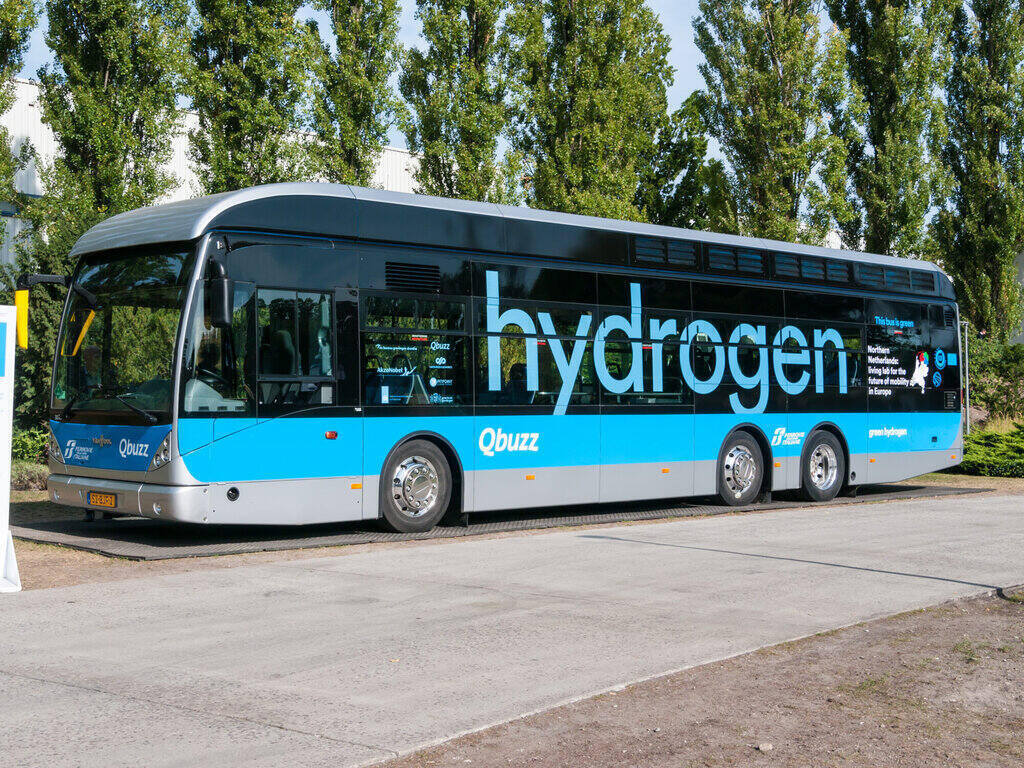In the face of an ongoing climate crisis, the world is urgently seeking sustainable energy alternatives to fossil fuels. Among the promising solutions emerging is green hydrogen, a clean and versatile energy carrier that has the potential to transform various sectors and industries, including transportation, power generation, and industrial processes.
In this article, we’ll look into green hydrogen, exploring its origins, the reasons behind its surging popularity, and the considerable benefits it offers, all while navigating the challenges that lie on the path to its widespread adoption.
What is Green Hydrogen?

Hydrogen, the most abundant element in the universe, is a clean and high-energy fuel that emits only water vapor when combusted. However, traditional hydrogen production methods, such as steam methane reforming, rely on fossil fuels, releasing significant greenhouse gas emissions.
At its core, green hydrogen is produced through a process known as electrolysis, where renewable energy sources, such as wind or solar power, are harnessed to split water into hydrogen and oxygen.
Unlike traditional hydrogen production methods, which often rely on fossil fuels, green hydrogen is characterized by its eco-friendly production process, emitting only water vapor when utilized.
What Can Green Hydrogen Be Used For?
One of the most exciting things about green hydrogen is its versatility. It has the potential to transform industries that have traditionally relied on fossil fuels. For example, it could revolutionize aviation, shipping, and trucking by providing a clean, efficient fuel alternative.
Heavy industries like steel and cement production—which have struggled to cut emissions—could also benefit from green hydrogen, using it to power their operations without contributing to climate change.
Additionally, green hydrogen can help balance out the inconsistencies of other renewable energy sources like solar and wind. Since these sources depend on weather conditions, green hydrogen can act as a long-term energy storage solution, storing excess renewable energy for use when the sun isn’t shining or the wind isn’t blowing.
The Appeal of Green Hydrogen
Sustainability Beyond Borders:
The primary allure of green, sustainable hydrogen lies in its potential to address global energy challenges. By utilizing abundant renewable resources, it transcends geographical limitations, offering a scalable and sustainable solution to meet the rising energy demands of the future.
Decarbonizing Heavy Industries:
Industries with substantial carbon footprints, such as steel and chemical production, face a dilemma in transitioning to cleaner energy sources. Net-zero hydrogen is emerging as a game-changer, providing a clean fuel option to replace carbon-intensive processes, significantly reducing emissions.
Energy Storage
Green hydrogen acts as an effective energy storage, addressing the intermittent nature of renewable energy sources like solar and wind. Excess energy generated during peak times can be used to produce green hydrogen, which is then stored and utilized when energy demand exceeds supply.
Versatility in Applications:
Sustainable hydrogen’s versatility extends to various sectors, including transportation, where it can power fuel-cell vehicles, and heating, serving as a clean alternative to natural gas. Its adaptability positions it as a key player in achieving a comprehensive transition to clean energy across diverse industries.
The Benefits of Green Hydrogen Adoption

Zero Carbon Emissions
The defining advantage of green hydrogen is its role in achieving a carbon-neutral energy landscape. As its production relies on renewable sources, its utilization generates no net carbon emissions, offering a tangible solution in the fight against climate change.
Energy Independence
By leveraging locally available renewable resources, countries can enhance their energy security and reduce dependence on fossil fuel imports. Net-zero hydrogen production can be tailored to harness the unique renewable potential of each region, fostering energy independence.
Job Creation and Economic Growth
The transition to a green hydrogen economy stimulates job creation and economic growth. Developing new infrastructure, manufacturing facilities, and research initiatives in the green hydrogen sector contributes to a sustainable and resilient economy.
Mitigating Intermittency Challenges
Green, sustainable hydrogen is a valuable tool in addressing the intermittency challenges associated with solar and wind energy. By serving as a reliable storage medium, it ensures a consistent energy supply even during low renewable energy generation periods.
Improved Air Quality
By replacing fossil fuels, sustainable hydrogen can significantly improve air quality, reducing air pollution and its associated health impacts.
Challenges on the Horizon
Production Costs
Currently, green hydrogen production remains more expensive than hydrogen derived from fossil fuels. Widespread adoption hinges on further technological advancements and economies of scale to make green hydrogen economically competitive.
Infrastructure Development
The infrastructure required for large-scale low-carbon hydrogen production, distribution, and utilization is still in its infancy. Building a robust and interconnected network demands substantial investments in facilities, pipelines, and fueling stations.
Technological Advancements
Ongoing research and development are essential for optimizing electrolysis technology, improving efficiency, and reducing the overall cost of green hydrogen production. Technological breakthroughs will be pivotal in driving the scalability and affordability of this renewable fuel.
Policy Frameworks and Incentives
A supportive regulatory environment is crucial for incentivizing the adoption of sustainable hydrogen. Governments and international bodies must implement policies encouraging investment, research, and development in the green hydrogen sector.
Public Acceptance
Increasing public awareness and addressing safety concerns will be crucial for the acceptance and adoption of green hydrogen technologies.
Is Green Hydrogen Safe?
Hydrogen is highly flammable, which naturally raises questions about safety. However, with proper technology and infrastructure, green hydrogen can be stored and transported safely. Many companies and countries are investing in developing safe, robust systems to handle hydrogen fuel.
What Countries and Companies are Leading the Charge?
Countries like Germany, Japan, and Australia are leading the way in green hydrogen development. Germany, for instance, has made green hydrogen a cornerstone of its energy transition strategy, investing billions in projects aimed at scaling up production and integrating hydrogen into its energy grid.
In terms of companies, energy giants like Shell, Siemens, and ITM Power are heavily involved in advancing green hydrogen technology.
How Long Until Green Hydrogen Goes Mainstream?
The timeline for green hydrogen to become widely adopted depends largely on how quickly production costs can be reduced and infrastructure can be developed. Experts predict that within the next decade, green hydrogen could play a major role in decarbonizing industries and complementing renewable energy systems.
The Future of Green Hydrogen
While green hydrogen still has hurdles to overcome, its potential to revolutionize clean energy is undeniable. As technology advances and costs fall, we can expect to see green hydrogen playing a growing role in reducing emissions, storing renewable energy, and helping industries transition away from fossil fuels.
In the fight against climate change, green hydrogen stands out as a versatile, powerful tool—and one that might just help shape a cleaner, more sustainable future.
Green Hydrogen FAQs

Green hydrogen is produced using renewable energy sources like solar and wind power, while gray hydrogen is produced from fossil fuels, primarily natural gas. This results in significantly lower greenhouse gas emissions for carbon-neutral hydrogen compared to gray hydrogen.
Green hydrogen has a wide range of potential applications, including:
Industrial Processes: Green hydrogen can be used in various industrial processes, such as steel production, ammonia synthesis, and refining.
Transportation: Green hydrogen can be used in fuel cell vehicles, which emit only water vapor and offer extended ranges compared to electric vehicles.
Power Generation: Green hydrogen can generate electricity in power plants, providing a clean and flexible energy source.
Governments can play a critical role in accelerating the adoption of green hydrogen by implementing supportive policies and regulations. These measures include providing financial incentives for green hydrogen production and infrastructure development, establishing carbon pricing mechanisms to incentivize the use of low-carbon fuels, and promoting international collaboration on green hydrogen standards and trade.
Hydrogen is highly flammable, which naturally raises questions about safety. However, with proper technology and infrastructure, green hydrogen can be stored and transported safely. Many companies and countries are investing in developing safe, robust systems to handle hydrogen fuel.
Though green hydrogen is clean in terms of carbon emissions, there are still questions about other environmental impacts, such as water usage in the electrolysis process. However, with careful management and technological advancements, these concerns are being addressed.
The short answer is yes. Green hydrogen could play a crucial role in helping the world reach net-zero emissions, especially in sectors where electrification is not feasible. By replacing fossil fuels in industries like shipping, aviation, and steel production, green hydrogen can significantly cut down on emissions that would otherwise be difficult to eliminate.












